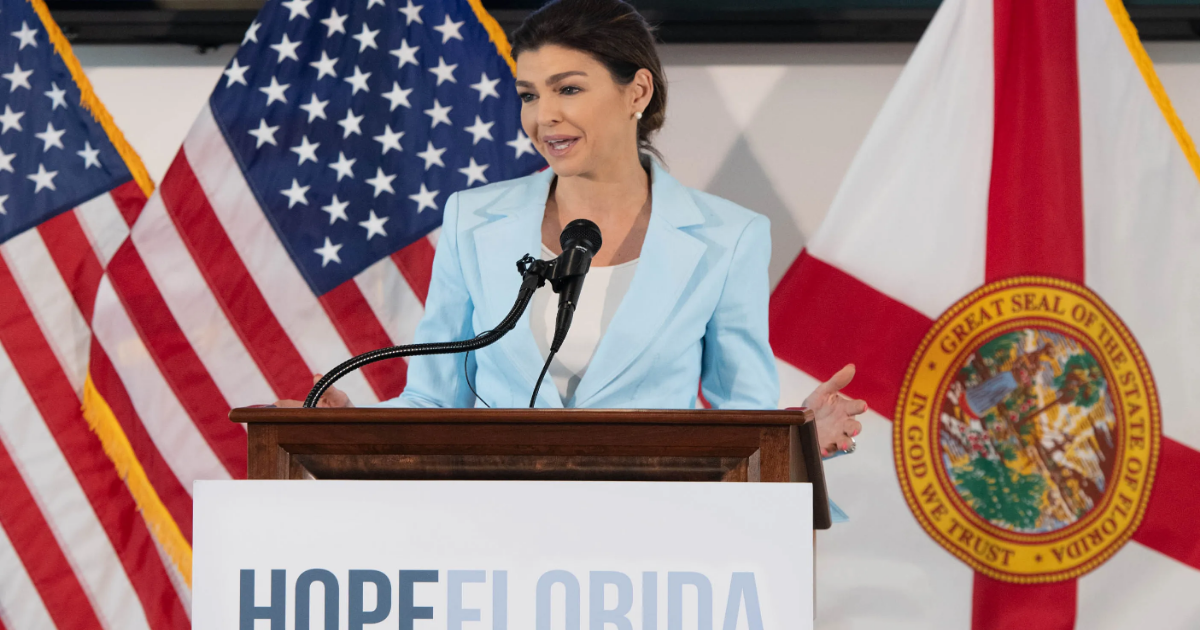
Poor Casey DeSantis.
She was supposed to put a fresh face on the DeSantis brand, elevating the meager political skills of her whiny, vindictive marital partner — who is term-limited but not emotionally ready to cede his imaginary legacy yet.
The vehicle to make Mrs. DeSantis, a former TV reporter-turned-mother of three, into a credible candidate for governor was a pet project called Hope Florida.
We’re supposed to believe that Casey dreamed up Hope Florida out of her abiding need to lift up Florida’s downtrodden.
“The Good Lord puts you in a position to do things,” was how she described it.
Need a break? Play the USA TODAY Daily Crossword Puzzle.
There’s a lot less to Hope Florida than meets the eye, and the recent revelations of its mismanagement of public money and its secret alliances with party politics has skewered this resume-building exercise for Casey DeSantis.
I guess “the Good Lord” went in another direction. And who could blame Him.
Hope Florida repackages canon Republicanisms
For starters, the idea that Florida’s governor’s mansion is ground zero for lifting up the state’s poor is preposterous.
Florida was one of 10 states that rejected taking federal money, up to 90% of costs, to expand Medicaid insurance under the Affordable Care Act for people earning up to 138% of the federal poverty level — a refusal that left nearly 300,000 Floridians uninsured.
And for two years running, Florida has refused to participate in the Sun Bucks federal program that provided $120 in groceries for poor kids during the summer months when school was out.
If you listen to Casey DeSantis’ stump speech about Hope Florida, it’s just a warmed over reprise of Republican talking points about government assistance being the culprit in holding poor people down.
“I don’t believe government is the solution to anything,” Casey DeSantis says.
“Let’s look exterior to government,” she says.
She talks a lot about getting churches to help people instead of government agencies. She talks about mobilizing the “20,000 institutions of faith” in Florida.
“Hey, churches, there’s a single mom and she’s having a tough time with groceries and food. Can you help?” she says. “They show up with a tray of lasagna. They show up with groceries.”
If you don’t think this is a viable way to address systemic poverty in the third largest state in the country, a state where 3 million of its residents live in poverty — about one in six Floridians – you’re not alone.
That’s just too many lasagnas.
The pure philosophical underpinning of the four-year-old Hope Florida is to get Florida’s poor to not apply for the public assistance they’re entitled to. It’s about taxpayer relief.
Or as Casey DeSantis puts it: “This is about a philosophy, ‘How do we engineer and restructure government to benefit the taxpayer and to benefit the people who deserve help?’”
Hope Florida is a phone referral service that duplicates the one already in existence in the state, and one that ultimately leads people back to pre-existing government programs for real, meaningful help.
Editorial: Trump’s government cuts will stifle Florida food banks, expand hunger crisis
Hope Florida claims to have rescued 30,000 residents, but it’s not an organization that has been upfront with the public.
“Hope Florida has not provided us any actual tangible track record of success other than a hotline that redirects people back to the state agencies that provide the services,” said Rep. Alex Andrade, a Republican lawmaker from Pensacola who has been leading the questioning of this DeSantis family enterprise.
Hoping that Hope Florida can answer some questions
Recent financial revelations have rocked Hope Florida and put its charitable status in question.
These revelations center around Centene, a managed care provider that overbilled Florida $67 million for Medicaid.
In a settlement with Centene, Gov. DeSantis directed about $10 million of that money to go to the Hope Florida Foundation, rather than the state’s general fund.
This is where things get dirty. The foundation then directed two grants of $5 million each to dark money groups affiliated with the Florida Chamber of Commerce.
Days later, about $8.5 million went to a political action committee controlled by the governor’s then-chief of staff, James Uthmeier, who DeSantis would later appoint to be the Florida Attorney General.
That political action committee would later send more than $10 million to the Florida GOP to use for advertising against the recreational marijuana amendment on last November’s ballot, and another $1 million to the governor’s own political action committee.
Opinion: Woke alert! Political indoctrination (right-wing) now on syllabus at New College
Yikes. These aren’t the machinations of a real charity. And this is no way to make your case for being Florida’s next governor.
It looks like the Good Lord is going to have to take Casey DeSantis in a new direction.
Frank Cerabino is a news columnist with The Palm Beach Post, which is part of the USA Today Network-Florida.
